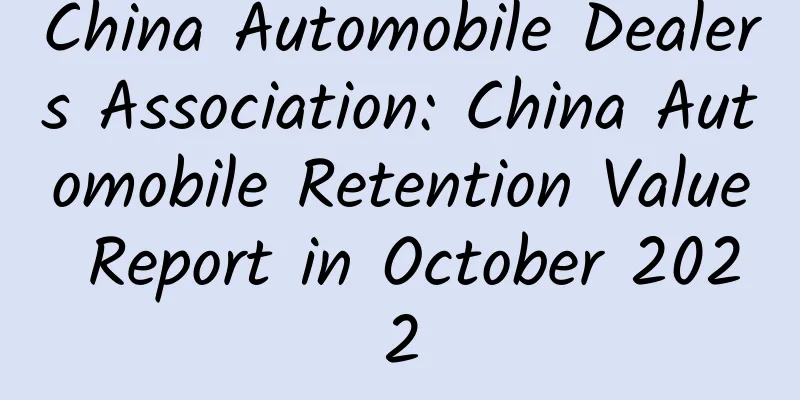China Automobile Dealers Association: China Automobile Retention Value Report in October 2022

|
Policy direction: Deepening “delegation, regulation and service” Hot Events - Extended Producer Responsibility for Automotive Products Changes in online vehicle supply volume: vehicle supply volume grew slightly month-on-month Value retention rate of each level - SUV value retention rate has risen significantly Changes in the new energy vehicle market - "year-end promotion" for new energy vehicles Value retention rates of different types of new energy vehicles: Plug-in hybrid vehicles have seen a rise in value retention rates |
<<: Omdia: Progress of major 5G markets in the third quarter of 2022
>>: Double 11 air conditioner inventory: prices begin to cool down, and value rises
Recommend
From the “big characters” that flood the friend circle, let’s look at the 7 logics behind the article being forwarded!
Last Friday, everyone suddenly discovered that a ...
Frankly speaking, it is inevitable that most information flow ads have poor conversion rates!
Recently, many optimizers and advertisers have as...
BAIC New Energy Approved for Backdoor Listing Still Faces Multiple Problems
Recently, SST Qianfeng issued an announcement sta...
One picture to understand the 2017 Apple conference/the most expensive iPhone in history is born
On September 13, Beijing time, the annual iPhone ...
How to write a short video title? How to write an excellent short video title?
Many people say that making short videos is too d...
How to operate an APP software online?
In general, app operations are divided into two a...
An introduction to Kuwo Music advertising promotion styles and material specifications!
Kuwo Music Advertising is China's leading onl...
Case study on social media marketing of domestic cosmetics brands
In recent years, traditional Chinese style and tr...
Cocos Game Development Engine——A game engine tailored for you
As the first one-stop solution for game developme...
Use these 4 dimensions to optimize the information flow of 3 major industries and kill everything in seconds!
As people's behavioral habits gradually move ...
Einstein's brain has 73% more matter than an average person! Scientists reveal the secret of a smart brain
When you mention the word "genius", who...
Google open-sources Eddystone BLE beacon communication format to challenge Apple
[[140491]] Google today open-sourced a low-power ...
BYD's journey to Japan was difficult after selling 15 cars in three years
On December 1, 2017, BYD held a delivery ceremony...
If you don’t drink a bowl of bean juice, you haven’t been to Beijing. Where does the charm of “stinky” come from?
As autumn deepens, Beijing begins to enter the mo...
Is the quantum measurement problem a problem?
The problem of quantum measurement is an unavoida...









